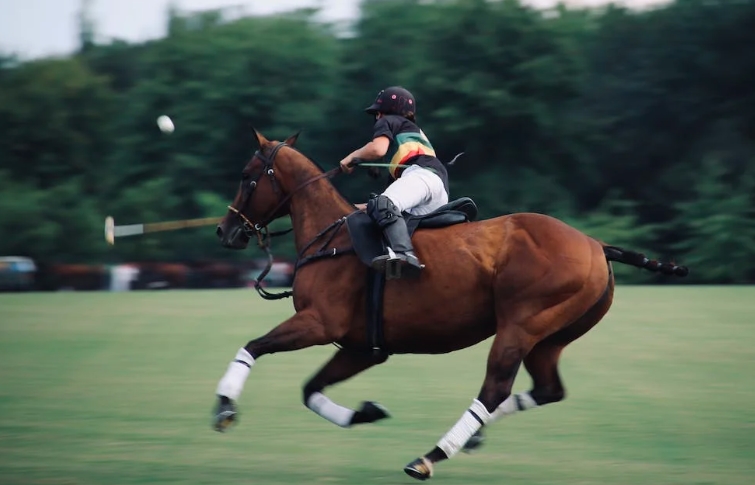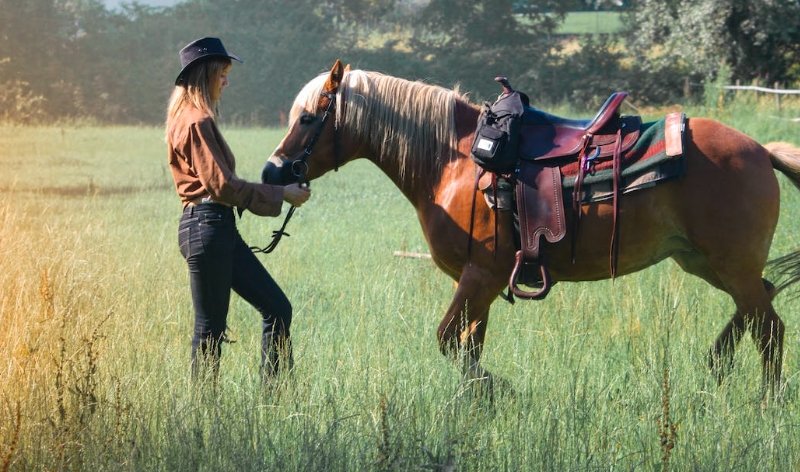Horses have been a part of human civilization since ancient times, playing an important role in both transportation and warfare. They have been revered and respected for their strength, speed, and beauty, and have inspired stories and art throughout the ages. Today, horses still remain popular, with hundreds of breeds and a variety of equestrian sports that captivate people all over the world.
This article will explore the history of horses and their role in human civilization, the importance of horse breeds and equestrian sports in modern society, and the different types of horses and equestrian sports available today. We will also look at the different breeds of horses and the unique characteristics of each one. Finally, we will discuss the importance of safety when participating in equestrian sports and the best ways to protect both horse and rider.
Whether you are a seasoned equestrian or just beginning to explore the world of horses, this article provides a comprehensive guide to horse breeds and equestrian sports that will help you gain a greater appreciation for these majestic animals.
Horse Breeds
Horses are one of the most wonderful creatures on earth, and they come in a variety of different breeds. Horse breeds can be classified into three main categories – hot bloods, cold bloods, and warm bloods. Hot bloods are the most athletic and spirited breeds and are often used in sports like racing and show jumping. They are usually bred for speed and agility. Cold bloods are larger, heavier horses that are bred for strength and draft work. They are often used for pulling carriages or farm equipment. Warm bloods are a combination of hot and cold blooded breeds and are often used for dressage and show jumping. They have a good amount of athleticism and strength.

In-depth profiles of popular horse breeds can provide a wealth of information. Depending on the breed, physical characteristics will vary, as will temperament. Some breeds are known for their speed, while others are known for their intelligence, stamina, and grace. Common uses for popular horse breeds can include work with the police, show jumping, and eventing. They are also popular for pleasure riding, trail riding, and other leisure activities.
Lesser-known horse breeds also have unique features and characteristics that make them special. These breeds can include the Appaloosa, Quarter Horse, and many others. They may have unusual patterns in their coats of fur, or they may have particularly strong personalities. Selecting the right breed for different equestrian activities is important, and it’s a good idea to learn about the characteristics of each breed before making a decision.
Horse breeds come in a variety of shapes, sizes, and temperaments, and it’s important to know what you’re looking for when selecting a breed. With the right breed, you can find the perfect horse for whatever activity you’re interested in, from racing and show jumping to trail riding and leisure activities.
Equestrian Sports
Introduction to Different Equestrian Sports
Equestrian sports encompass a wide range of activities, from the traditional English disciplines such as dressage and show jumping, to the more modern Western sports of barrel racing and pole bending. Other disciplines include eventing, reining, endurance, driving, and vaulting. Each of these sports has its own unique rules and regulations, as well as its own training and equipment requirements.
The History and Evolution of Each Sport
Dressage is one of the oldest equestrian sports, dating back to the Greek and Roman civilizations. It has evolved over the centuries and is now an Olympic event. Show jumping has also been around for centuries, but it was not until the late 19th century that it began to gain popularity. Eventing is a relatively new sport, having been developed in the late 19th century. Reining has only been around for a few decades and is still gaining popularity. Endurance and driving have been around for centuries, and vaulting has been around since the Middle Ages.
Rules and Regulations of Each Sport
The rules and regulations of each equestrian sport vary from discipline to discipline. Dressage is governed by the International Equestrian Federation (FEI), and its rules are based on the principles of classical horsemanship. Show jumping is governed by the International Federation for Equestrian Sports (IFES), and its rules focus on the safety of both the horse and rider. Eventing is governed by the Eventing Association of Great Britain (EAG), and its rules are designed to test the horse and rider’s endurance, agility, and courage. Reining is governed by the National Reining Horse Association (NRHA), and its rules are designed to test the horse’s agility and responsiveness to the rider’s commands. Endurance is governed by the American Endurance Ride Conference (AERC), and its rules are designed to test the horse’s strength and stamina. Driving is governed by the International Federation for Equestrian Sports (IFES), and its rules focus on the safety of both the horse and driver. Vaulting is governed by the International Federation for Equestrian Sports (IFES), and its rules focus on the safety of both the horse and vaulter.
Training and Equipment Needed for Each Sport
Each equestrian sport requires different types of training and equipment. Dressage requires a high level of training in classical horsemanship and the use of specialized equipment such as dressage saddles and bridles. Show jumping requires a horse and rider to be highly trained in jumping techniques and the use of specialized equipment such as jump poles and cups. Eventing requires a high level of training in jumping, dressage, and cross-country skills and the use of specialized equipment such as eventing saddles and bridles. Reining requires a high level of training in the specific skills of reining and the use of specialized equipment such as reining saddles and bridles. Endurance requires a horse and rider to be highly trained in long-distance riding and the use of specialized equipment such as endurance saddles and bridles. Driving requires a high level of training in the specific skills of driving and the use of specialized equipment such as carriages and harnesses. Vaulting requires a high level of training in vaulting techniques and the use of specialized equipment such as vaulting barrels and poles.
Famous Horses and Riders in Each Sport
Each equestrian sport has produced a number of famous horses and riders over the years. Dressage has produced iconic horses such as the Hanoverian stallion, Satchmo, and the Dutch Warmblood, Moorlands Totilas. Show jumping has produced legendary riders such as the American, Bill Steinkraus, and the British, Richard Meade. Eventing has produced legendary horses such as the Thoroughbred, The Lion, and the Irish Sport Horse, Master Crusoe. Reining has produced iconic horses such as the Quarter Horse, Hollywood Jac 86, and the Paint Horse, Hollywood Dun It. Endurance has produced legendary horses such as the Arabian, Aaras, and the Thoroughbred, Little Matt. Driving has produced legendary horses such as the Welsh Cob, Lady Grey, and the Dutch Warmblood, Dax. Vaulting has produced iconic horses such as the Trakehner, Paloma, and the Holsteiner, Calypso.
Horse Care and Management
Basic Horse Care:
Feeding: Horses need an adequate supply of quality feed and water to maintain their health and performance. Feed should be appropriate for the horse’s age, size, and activity level and may include hay, pasture, concentrates, and supplements. Horses should be fed regularly to maintain their energy levels and digestive health.
Grooming: Regular grooming is essential for the horse’s overall health and well-being. Grooming helps remove dirt, debris, and excess hair, as well as stimulating the skin and improving circulation. It can also help to identify any skin issues or other health concerns. Grooming equipment includes a brush, comb, hoof pick, and a cloth.
Hoof Care: Regular hoof care is essential for the horse’s overall health and well-being. Hoof care should include cleaning and trimming the hooves, as well as checking for any abnormalities or injuries. A farrier should be consulted for more complex hoof care needs.

Health and Medical Concerns:
Vaccinations: Horses should be vaccinated regularly to protect against common illnesses and diseases. Vaccines should be administered according to the manufacturer’s recommendations and may include rabies, tetanus, West Nile virus, and equine influenza.
Diseases: Common equine diseases include strangles, equine infectious anemia, equine herpesvirus, and equine influenza. It is important to monitor the horse for any changes in behavior or health, as early detection and treatment can help to reduce the risk of serious illness or injury.
Injuries: Horses can be prone to injuries due to their size and activity levels. It is important to be aware of the risks of riding and other activities, as well as providing adequate protection and support. It is also important to be aware of the signs of injury, such as lameness, swelling, and heat, and to seek veterinary attention as soon as possible.
Stable Management:
Environment: The environment of the stable should be comfortable and safe for the horses. The temperature, humidity, and air quality should all be monitored to ensure the horses are comfortable and healthy. Bedding should also be changed regularly to maintain hygiene.
Cleaning: The stable should be cleaned regularly to maintain hygiene and safety. Cleaning should include sweeping, scrubbing, and disinfecting surfaces, as well as removing debris and waste.
Maintenance: The stable should be maintained regularly to ensure the safety of the horses. This includes checking for signs of wear and tear, such as fraying ropes, cracked walls, and broken equipment. Any issues should be addressed immediately.
Tips for Creating a Good Relationship with Your Horse:
• Take the time to get to know your horse and understand their individual needs and personality.
• Establish a consistent routine for feeding, grooming, and exercise.
• Always handle your horse gently and calmly.
• Give your horse plenty of praise and rewards for good behavior.
• Spend time with them every day to build a strong bond.
• Be patient and consistent in your approach.
Conclusion
Horse play is an important part of horse culture and the equestrian sports world. It is a great way to bond with your horse, and to develop an understanding of their behavior and needs. Horse play can also be used as a form of training, allowing you to develop a stronger relationship with your horse and to help them become more responsive to your commands. It is important to remember that horse play should be done in a safe and controlled environment, as horses can be unpredictable and can cause injury if not handled properly. Horse play should be enjoyed by both the horse and rider, and should be used to help strengthen the bond between the two. Horse play is an integral part of horse culture, and it’s important to remember that safety should be the top priority.
FAQs
1. What are the different horse breeds?
There are more than 350 different horse breeds from around the world, and they can be divided into three main categories: draft horses, light horses, and ponies. Draft horses are large and powerful and are used for riding, farm work, and pulling carriages. Light horses, such as Thoroughbreds and Arabians, are smaller and used for racing and show. Ponies are small horses and are often used for children’s riding activities.
2. How do I choose the right horse breed for me?
Choosing the right horse breed for you depends on what type of activities you plan to do with your horse. If you plan to use your horse for riding, then you should choose a breed that is well-suited to the type of riding you plan to do. If you plan to use your horse for racing, then you should choose a breed with a history of success in the sport. It is also important to consider the temperament of the breed to make sure it is a good fit for you.
3. What is the most popular horse breed?
The most popular horse breed in the United States is the American Quarter Horse. This breed is known for its versatility and is used for a variety of activities including racing, pleasure riding, and show.
4. What is the best horse breed for beginners?
The best horse breed for beginners is the American Quarter Horse. This breed is known for its calm temperament, making it a good choice for those who are just starting out with horses. Additionally, the American Quarter Horse is versatile and can be used for a variety of activities, including pleasure riding and show.
5. How much does a horse cost?
The cost of a horse can vary greatly depending on the breed, age, and condition of the horse. Generally, horses can cost anywhere from a few hundred dollars for a rescue horse to tens of thousands of dollars for a well-bred show horse.
6. What is the difference between a mare and a stallion?
The main difference between a mare and a stallion is their gender. A mare is a female horse, while a stallion is a male horse. Additionally, stallions are usually larger and more aggressive than mares, so they are usually not suitable for novice riders.
7. What is the best way to train a horse?
The best way to train a horse is through positive reinforcement. This means rewarding the horse with treats or praise when it performs the desired behavior. Additionally, it is important to be patient and consistent when training a horse, as it takes time for them to learn new behaviors.
8. What is the best way to care for a horse?
The best way to care for a horse is to provide them with regular veterinary care, exercise, grooming, and a balanced diet. Additionally, it is important to provide your horse with a safe and comfortable environment, as well as companionship from other horses or humans.
9. What is the difference between a horse and a pony?
The main difference between a horse and a pony is their size. Horses are typically larger than ponies, although there is overlap in size between the two. Additionally, ponies are usually better suited for children’s activities, as they are generally more gentle and patient than horses.
10. What is the most common equestrian sport?
The most common equestrian sport is dressage. This sport involves complex movements and techniques that are performed by both the horse and the rider. Other popular equestrian sports include show jumping, eventing, and racing.


















